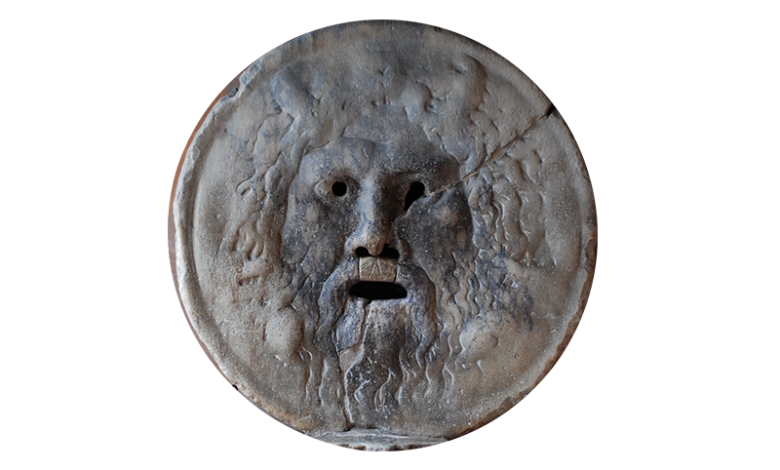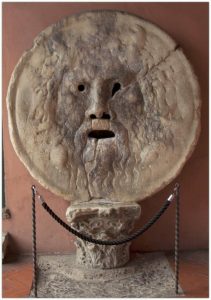


 In fact, the work confirms the specific symbolic form that represents the solar form of the god Fauno, an Italian divinity, often confused with the Greek god Pan, both which had similar characteristics, as well as with the god Silvano, the Latin divinity of the game and forest.
In fact, the work confirms the specific symbolic form that represents the solar form of the god Fauno, an Italian divinity, often confused with the Greek god Pan, both which had similar characteristics, as well as with the god Silvano, the Latin divinity of the game and forest. The big tile measures a thickness of 22 cm and a diameter of 166 cm with an overall weight of close to 13 tons. The cavities on the sides of the big marble disc, used for fastening purposes, identify the work as an opera vertical and central, hung on the bottom of the wall.
The big tile measures a thickness of 22 cm and a diameter of 166 cm with an overall weight of close to 13 tons. The cavities on the sides of the big marble disc, used for fastening purposes, identify the work as an opera vertical and central, hung on the bottom of the wall.| Cookie | Duration | Description |
|---|---|---|
| cookielawinfo-checkbox-analytics | 11 months | This cookie is set by GDPR Cookie Consent plugin. The cookie is used to store the user consent for the cookies in the category "Analytics". |
| cookielawinfo-checkbox-functional | 11 months | The cookie is set by GDPR cookie consent to record the user consent for the cookies in the category "Functional". |
| cookielawinfo-checkbox-necessary | 11 months | This cookie is set by GDPR Cookie Consent plugin. The cookies is used to store the user consent for the cookies in the category "Necessary". |
| cookielawinfo-checkbox-others | 11 months | This cookie is set by GDPR Cookie Consent plugin. The cookie is used to store the user consent for the cookies in the category "Other. |
| cookielawinfo-checkbox-performance | 11 months | This cookie is set by GDPR Cookie Consent plugin. The cookie is used to store the user consent for the cookies in the category "Performance". |
| viewed_cookie_policy | 11 months | The cookie is set by the GDPR Cookie Consent plugin and is used to store whether or not user has consented to the use of cookies. It does not store any personal data. |